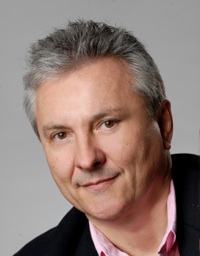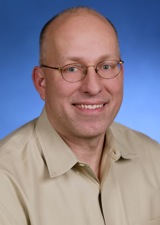Green HPC Podcast Episode 4: Stop pampering your processors!
The use of commodity components in HPC has made supercomputers bigger and cheaper to buy while driving their operating costs through the roof. Where once stood 100 KW supercomputers, systems of 1,000 KW and up are common. Even if you aren’t motivated to save the environment, you probably are getting a lot of pressure to reduce costs. But where to start? By not pampering your processors.
We are proud to have this episode sponsored by Convey Computer
Listen to Episode 4: Stop pampering your processors! [audio:http://insidehpc.com/media/GreenHPCJune09/GreenHPCEp4.mp3]
Download Episode 4
Get the transcript
Generally datacenter managers follow ASHRAE guidelines when deciding how to cool their machine rooms, which specify that datacenters operate between 20 and 25 degrees C, about 68 to 77 degrees Fahrenheit. But, as Microsoft’s Christian Belady explained to me, this operating range comes from a time when computers didn’t need cool rooms at all, they were cooled by water. The recommended operating temperature was for the comfort of people, not the proper operation of computers.
Yet, server manufacturers today routinely build IT equipment to withstand temperatures up to 100 degrees F, and higher routine operating temperatures are possible with a little engineering. In this episode we talk with LBNL’s Horst Simon, Microsoft’s Christian Belady, and HP’s Steve Cumings to find out why we persist in running machine rooms as cold as meat lockers, and what we can do about it.
 We hope that you start this episode skeptical, so that you’ll be even more entertained by the story of Christian’s Tent City computing experiment. Haven’t heard of it? He ran servers out behind his building, in a leaky tent, for nearly a year with no failures (picture at right).
We hope that you start this episode skeptical, so that you’ll be even more entertained by the story of Christian’s Tent City computing experiment. Haven’t heard of it? He ran servers out behind his building, in a leaky tent, for nearly a year with no failures (picture at right).
Listen to Episode 4: Stop pampering your processors! [audio:http://insidehpc.com/media/GreenHPCJune09/GreenHPCEp4.mp3]
Download Episode 4
Get the transcript
Guest Bios and Links
Horst Simon, Lawrence Berkeley National Lab
 Horst Simon is Associate Laboratory Director at Lawrence Berkeley National Laboratory for Computing Sciences and the Division Director for the Computational Research Division and Adjunct Professor of Computer Science at the University of California, Berkeley. His research interests are in the development of sparse matrix algorithms, algorithms for large-scale eigenvalue problems, and domain decomposition algorithms. His recursive spectral bisection algorithm is a breakthrough in parallel algorithms. He was also honored with the 1988 Gordon Bell Prize. He has served as a senior manager for Silicon Graphics, the Computer Sciences Corporation, Boeing Computer Services, and has been a member of the faculty at the State University of New York. He is currently a member of the advisory boards of more than five research organizations located throughout the world and is a member of many journal editorial boards and one of four editors of the twice-yearly “TOP500” list of the world’s most powerful computing systems.
Horst Simon is Associate Laboratory Director at Lawrence Berkeley National Laboratory for Computing Sciences and the Division Director for the Computational Research Division and Adjunct Professor of Computer Science at the University of California, Berkeley. His research interests are in the development of sparse matrix algorithms, algorithms for large-scale eigenvalue problems, and domain decomposition algorithms. His recursive spectral bisection algorithm is a breakthrough in parallel algorithms. He was also honored with the 1988 Gordon Bell Prize. He has served as a senior manager for Silicon Graphics, the Computer Sciences Corporation, Boeing Computer Services, and has been a member of the faculty at the State University of New York. He is currently a member of the advisory boards of more than five research organizations located throughout the world and is a member of many journal editorial boards and one of four editors of the twice-yearly “TOP500” list of the world’s most powerful computing systems.
Links
- Presentation: Energy Efficient Computing-From Bits to Buildings
- Leadership in Energy Efficient Computing
- Guide to self-benchmarking your datacenter from LBNL
Christian Belady, Microsoft
 Christian Belady is Microsoft’s Principal Power and Cooling Architect for Global Foundation Services’ Infrastructure Services team where his role is to improve both efficiency and cost in their online services infrastructure. In addition, his responsibilities included driving initiatives for sustainability in the data center and infrastructure space.
Christian Belady is Microsoft’s Principal Power and Cooling Architect for Global Foundation Services’ Infrastructure Services team where his role is to improve both efficiency and cost in their online services infrastructure. In addition, his responsibilities included driving initiatives for sustainability in the data center and infrastructure space.
Prior to Microsoft, Christian was Server Hardware Architect driving the technology directions of HP’s servers from a power, cooling and packaging perspective where he gained recognition as an industry leader in the area of server and data center efficiency. With over 60 US patents, Christian is an ASME Fellow, an IMAPS Fellow and a founding member of ASHRAE’s TC9.9, which is responsible for developing data center guidelines. He was one of the early architects of the Green Grid, and continues to participate actively with the group. He also works closely with government agencies globally to define efficiency metrics for data centers and servers. Christian has published several dozen papers and is a featured speaker on power and cooling trends at events across the industry.
Links
- Blog post by Christian talking a little further about his interview
- Microsoft’s Global Foundation Services website
- Microsoft’s Top 10 Business Practices for Environmentally Sustainable Data Center
- Running servers in tents
Steve Cumings, HP
 Steve Cumings leads an HP team focused on data center infrastructure solutions. His responsibilities include defining and managing portfolios for data center energy and infrastructure, and introducing new solutions to the market – the most recent of these is the HP POD, HP’s flexible and highly capable datacenter container. Steve’s focus is on solutions that expand HP’s datacenter portfolio, supporting customers’ needs for increased data center energy performance.
Steve Cumings leads an HP team focused on data center infrastructure solutions. His responsibilities include defining and managing portfolios for data center energy and infrastructure, and introducing new solutions to the market – the most recent of these is the HP POD, HP’s flexible and highly capable datacenter container. Steve’s focus is on solutions that expand HP’s datacenter portfolio, supporting customers’ needs for increased data center energy performance.
In twelve years with HP Steve has led multiple product and business activities across HP’s Industry Standard Server division, and has been involved in key initiatives ranging from large-scale x86 platforms to the HP/Compaq merger team. He also speaks and leads sessions at industry events, including in the recent past Gartner Datacenter, HP’s TechForum, CIAB (Brazil) and Emerson DCUG.



